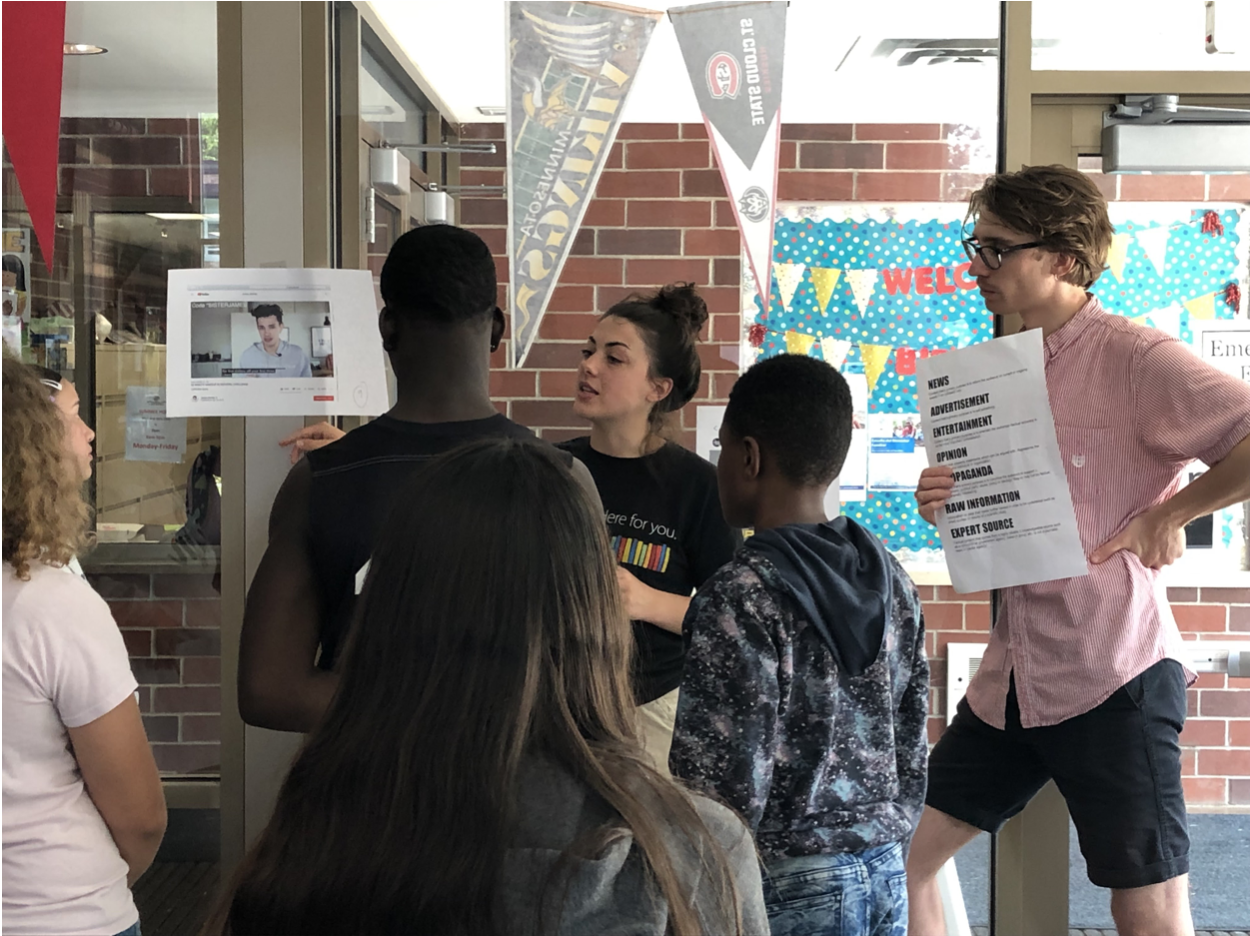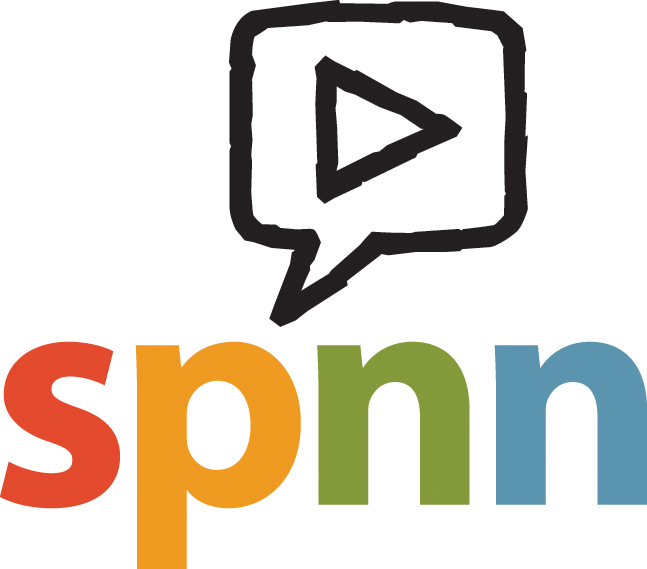Media Literacy with Twin Cities Youth

What makes something news? Which Instagram posts are advertisements? How should we interpret raw climate data? These are some of the questions we spent time discussing with teens and tweens this year. Our CTEP civic engagement project - Media Literacy with Twin Cities Youth - partnered with four organizations, Ramsey County Library, Hennepin County Library, the Boys and Girls Club, and the University YMCA to facilitate a total of six workshops.
Our initial inspiration came from a 2016 Stanford Study, which showed that while youth are generally tech savvy, they are not so good at determining how credible online articles are. Based on this research, we started out with some very clear goals for who we wanted to partner with (high school teachers, during school time), as well as what our curriculum would address (online news articles). But, as with all things technology and teaching related, adaptation became a huge part of the process.
Our first challenge was finding a community partner. We realized after several months of reaching out to teachers that it would be really difficult to facilitate a workshop during school time. While they may have loved our ideas, public school teachers are constrained by time and State curriculum standards--they have very important things to teach too! So we began reaching out to after-school and summer youth programs to partner with. Happily, we found four: Ramsey County Library, Hennepin County Library, the Boys and Girls Club, and the University YMCA.
Our second challenge was in adapting the curriculum itself. We started out with an outline taken from commonsensemedia.org (a great resource for educators). The workshop we devised had youth walk around a class-room and identify the primary purpose of various examples of online media such as, “to inform” or “to sell a product.” After reviewing their answers, we then asked youth to put those same media sources into six categories: News, advertisement, entertainment, opinion, propaganda, and raw information. The final portion was an “ID competition” where we flipped through a slideshow of new media examples and youth competed to see who could categorize the most correctly.
We learned from facilitating our first two workshops that our media examples didn’t really reflect the kinds of things youth engage with online. We needed more social media examples, less New York Times. Also, it kind of felt like school--we needed to make it fun!
So we changed things up. Our end result was a workshop with two parts. We kept the initial category matching portion, but added more social media and video examples, keeping some traditional news too. We also gave students a category word bank to reference as they walked around the room so it felt like less of a “test.”
For the second half of the workshop, we added a media-making component where students got to make either GIFS or short films. Youth were split into groups and given a prompt to create something like “an advertisement that appeals to your parents,” or “ a talk show that your younger sibling would watch.”
The results were both creative and hilarious. One of my personal favorites was from the Boys and Girls Club. Because we had more time, youth got to shoot videos using CTV DSLR cameras. They created a talk show where the guest free-style rapped about chicken to entertain an audience of senior citizens. The final product was very funny, but even better was seeing the teens take charge of the whole process, from writing the script to framing the camera shots.
In terms of impact, I think my group members would agree our biggest success was finding a way for youth to participate in a conversation about media literacy that felt relevant to them. As educators, it pushed us to reconsider our own ideas and find new ways to engage students.
Group members: Abby Hebler, Oli Peters, Peder Tune, Sydney Bertun
Community partners: Ramsey County Library, Hennepin County Library, the Boys and Girls Club, University YMCA
Each year our 35 CTEP AmeriCorps members choose community action projects that make a contribution to bridging the digital divide. The CTEP civic engagement projects are often cited by CTEP AmeriCorps members, staff, supervisors, and community supporters as one of the most unique and energizing parts of the program. This is one of the 2019 civic engagement projects.
